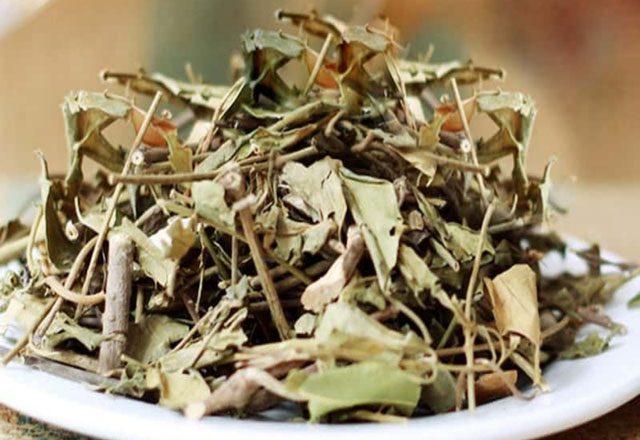This plant has been proven to have many beneficial effects for people with diabetes who want to manage their blood sugar levels.
Gymnema Sylvestre is a type of climbing plant that was first found in the tropical regions of India and is used in traditional medicine to treat diabetes, malaria, snake bites, and more.
In Vietnam, this plant is common in the northern provinces, with cultivation areas established in Nam Dinh and Thai Nguyen. Locals harvest all parts of the plant year-round, using it fresh or dried.

This plant is common in the northern provinces of Vietnam.
Modern science has demonstrated that Gymnema Sylvestre can help control blood sugar levels, reduce inflammation, support weight loss, and lower LDL cholesterol and “bad” triglycerides. Therefore, this plant is also dubbed the “golden herb” for people with diabetes.
Lowering Blood Sugar
According to many studies published in the U.S. National Library of Medicine, the compound gymnemic acid found in Gymnema Sylvestre can reduce sugar cravings. Gymnemic acid also stimulates the production of beta cells in the pancreas, thereby increasing insulin production and helping to balance blood sugar levels.
Compounds in Gymnema Sylvestre can prevent your intestines from absorbing sugar, thereby reducing your blood sugar levels after meals.
A U.S. study indicated that Gymnema Sylvestre could also improve blood sugar control in individuals with Type 2 diabetes, thereby reducing dangerous and long-term complications of the disease.
Reducing Cholesterol and Blood Pressure
According to two studies from India, Gymnema Sylvestre has effects that lower blood fat levels, especially LDL cholesterol (the “bad” cholesterol), preventing fat accumulation in the liver.

Gymnema Sylvestre extract lowers triglycerides and increases “good” cholesterol levels.
Additionally, a study on moderately obese individuals showed that Gymnema Sylvestre extract reduced triglycerides and increased “good” cholesterol levels. High levels of bad cholesterol and triglycerides are risk factors for atherosclerosis and stroke. Therefore, regularly using this herb can help prevent heart disease.
The compounds in Gymnema Sylvestre also increase nitric oxide production, a vasodilator. This helps relax the muscles within blood vessels, improving blood flow and potentially lowering blood pressure.
Supporting Weight Loss
A small 2004 study on moderately obese individuals using Gymnema Sylvestre extract showed that their body weight decreased by 5-6%, while their food intake also reduced. This is because this plant reduces sugar cravings, leading participants to consume fewer sweets and fewer calories, resulting in a calorie deficit and weight loss.
In addition to the aforementioned benefits, Gymnema Sylvestre also helps reduce inflammation— a cause of many health issues such as arthritis, diabetes, cardiovascular diseases, and more.
How to Use Gymnema Sylvestre?
Gymnema Sylvestre can be used in the form of tea after being dried or as a powdered form from the dried leaves. To brew Gymnema Sylvestre tea, boil 50g of the dried leaves and stems in 1.5 liters of water, then let it steep for 10-15 minutes before drinking.
For the powdered form, it is advisable to start with a dosage of 2g, then increase to 4g if needed or as directed by a doctor. Gymnema Sylvestre should be taken 15-20 minutes after meals to help lower blood sugar levels.

Ensure to choose the correct Gymnema Sylvestre free from contamination with other plants.
Precautions When Using Gymnema Sylvestre
Some properties of Gymnema Sylvestre can cause reactions if boiled in metal utensils, so it is advisable to choose glass or ceramic pots/bottles for safety. Additionally, make sure to select the correct Gymnema Sylvestre free from contamination with other plants.
This herb is safe for most people. However, children, pregnant women, nursing mothers, or those planning to become pregnant should avoid it. Furthermore, individuals taking blood sugar-lowering medications should consult a doctor first to avoid side effects such as headaches, nausea, dizziness, or tremors.


















































